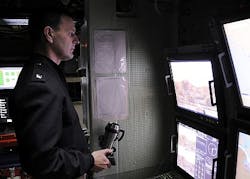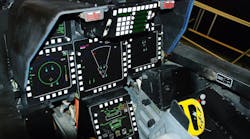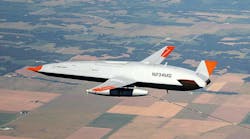Engineers from the Lockheed Martin Mission Systems and Training segment in Manassas, Va., will provide 20 AN/BVY-1 Integrated Submarine Imaging Systems (ISIS) spare parts under terms of the contract, awarded by Naval Sea Systems Command in Washington.
ISIS provides mission critical, all-weather, visual, and electronic search, digital image management, indication, warning, and platform architecture interface capabilities for Los Angeles-, Ohio-, and Virginia-class submarines.
ISIS revolutionizes Navy submarine surveillance capabilities by integrating digital video and still images from devices on a submarine's exterior and presenting real-time imagery and analysis on crews' existing control room tactical displays.
ISIS provides digital image enhancement for data from a modern submarine's photonics mast. The photonics mast uses optical fiber to move imaging data from a raised mast aboard a submerged submarine through tiny openings in the submarine's hull to tactical displays around the interior of the vessel.
The photonics mast replaces or augments the traditional periscope aboard U.S. submarines. The photonics mast not only the large opening in the submarine pressure hull necessary for the optics and hydraulics of a traditional periscope, but also can blend image data from several kinds of electro-optical sensors aboard the photonics mast, including visible-light and infrared cameras.
The ISIS system enables a submarine operator to manipulate a photonics mast with a joystick, while looking at digital video on a computer monitor, and share that video real-time with the submarine's combat team on various displays aboard the vessel.
ISIS also provides submarine operators with image enhancement and analysis tools; active and passive range finding control; and recording, storage, and recall options for imagery and associated data. In addition, the system's infrared cameras can enhance images and transmit them from the submarine to other naval and joint forces. ISIS supports both periscope and photonic mast applications.
The AN/BVY-1 ISIS provides an optical light path of existing submarine periscopes replaced with high-definition cameras and fiber optic digital imagery. The system provides infrared camera images; active and passive range finding control; image enhancement and analysis tools; recording, storage and recall capabilities; and transmission off the submarine to other naval and joint forces.
On the current contract Lockheed Martin will do the work in Johnstown, Pa.; Manassas, Va.; Northampton, Mass.; and Chantilly, Va., and should be finished by September 2015.
For more information contact Lockheed Martin Mission Systems and Training online at www.lockheedmartin.com/us/mst, or Naval Sea Systems Command at www.navsea.navy.mil.



